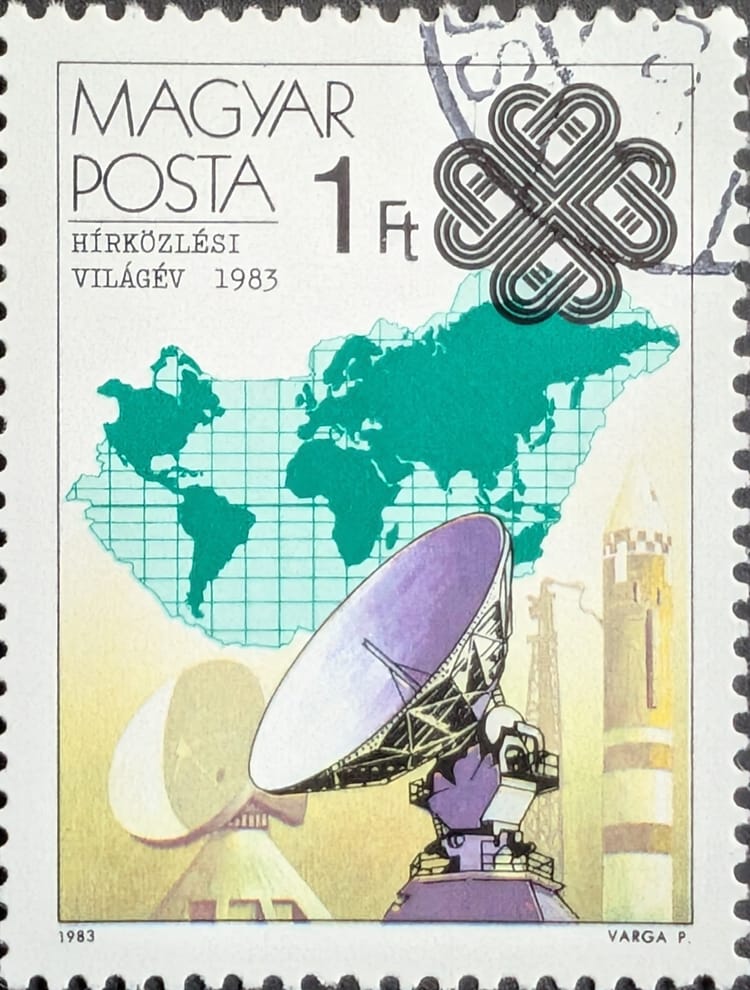Space Industry Stories and Fibs

Part of this post is to have some fun with a few common industry claims. Those familiar with these claims might chortle, and others might feel targeted. However, the post might help some readers understand that a few “truths” are more marketing, aiming to get buy-in with no actual product or service to back them up. They are preying on the dreams of those earnestly wishing to see humanity loose among the stars.
Liars will lie, which is an observation the former Air Force assistant secretary for acquisition and integration, Frank Calvelli, made recently (in a Breaking Defense interview):
He said that while he is proud of the success so far by SDA in showing the Space Force the way on speeding satellite development, he also is urging his successors to judge programs not just on accelerating schedules but providing results for the warfighter. Also, keep in mind that in the acquisition process, he said, “industry lies.”
The “Gregor MacGregors”
This gentleman has worked in the industry for a long time and was polite in using the word “lies.” I suggest that the space industry’s propensity for unfounded and non-factual hyperbole and exaggeration extends beyond the acquisition process (we’ve seen global space economy forecasts, right?). It’s not that everyone lies, but those who do make things worse for everyone. The tendency to fib is a reason why the Department of Defense acquisition process is as enigmatic as it is.
Here’s my additional observation and question–if some companies and people in the space industry lie during formal government acquisition processes (which can be pretty punitive if the lies are caught), then why would they suddenly be truthful to hopeful investors and internet/social media randos? I don’t think either group has incentives for them to be truthful (it's why EBITDA exists). Like carnival hucksters from previous gilded ages, they seem all too willing to make fantastically silly assertions. All that’s missing are monocles and mustaches.
As in previous years, 2024 had its fill of silly assertions in the space industry. Some assertions are retreads of earlier years, but some are new (and likely not as enduring). They are usually obvious marketing exercises that hope target customers do not know space industry history or business and ideally exhibit tendencies of blind loyalty.
It’s a short list (of a much longer one). I’m only going to call out a few because they have annoyed me in the past few months and years, not because they have any kind of merit.
The retreads:
- Wagons Ho to Mars–soon.
- Cheap Launches (usually thanks to SpaceX).
- Smallsat launchers are big business.
Newer:
- New Glenn: It Changes Everything!
Wagons Ho to Mars–soon. Maybe…
The emphasis on crewed missions to Mars has been around for a long time in the United States. But as of the beginning of 2025, no people have left tracks on Mars yet.
Going back at least as far as January 2004, George W. Bush established a new space exploration vision of going to Mars, using the Moon as the jump-off point. He established a 2020 goal of just reaching the Moon. Chances are, Bush was earnest in this vision. But others use it to prime the investment pump. Elon Musk has done this so often that there’s a Reddit list of his Mars goal revisions. Sure, a person is allowed to revise goals, but…it’s a long list. And his latest revision is just as unrealistic. Neither NASA nor Musk will be sending pioneers to Mars soon. Neither one is ready.
Throughout SpaceX’s travails with Starship, the public has yet to see an actual mockup of a Starship capable of transporting humans (whereas at least Orion, with crew systems, has been launched). Maybe the company is working on it. However, when the company worked on Crew Dragon (a much smaller vehicle less complex than Starship), it introduced the capsule’s design in 2014. The Crew Dragon capsule first flew with a crew six years later, in May 2020.
Sure, SpaceX’s Starship manufacturing process is different from Crew Dragon, but manufacturing an environment within Starship that will keep humans not just safe but comfortable (for months at a time) is a complex task, full of potential hiccups. It will probably take more time to develop than Crew Dragon. Maybe it’s in secret development, but that’s not Musk’s style. If he had something, he’d get it in front of the public (and, more importantly, investors). We might see Starship on Mars before 2028, but a crewed mission before 2030 seems unrealistic.
On the other hand, SLS seems to be a much more realistic option, even though it costs much more to use. But Orion doesn’t appear ready for a Mars mission (and wouldn’t be ready by 2030 with NASA’s current program management). But it doesn’t make sense to throw this away when SpaceX is still haphazardly dropping Starships onto some of the world’s residents' unsuspecting heads (like China does with some of its launches).
What makes this more suspicious is the sense of urgency many Mars proponents, including Musk, place on pioneering the Red Planet. What’s the hurry? I believe the urgency is used to short-circuit the whole “why?” conversation.
After all, you want to save humanity, right? You monster!
Cheap Launches
I’ve already written about this in “The Underachievers” because it is a common, if incorrect, assertion. It is a “space zombie statistic.” It is a constantly revived and repeated untrue story.
As I noted in that article, zombie statistics are untrue numbers or facts constantly used to support narratives. These rise up so often that some people let the infection take hold and feel compelled to spread it to the masses (because, by this time, no person has heard of SpaceX’s low launch pricing). I suspect that even when the Falcon 9 becomes a history footnote, the “discount launch zombie” will rise again.
SpaceX is the only company with reduced launch costs (but not too reduced). Arianespace and ULA, on the other hand, still offer launches with higher pricing than SpaceX. They aren’t even trying to compete. Instead, they appear in search of maintaining high launch costs through government contracts (or suckers). Blue Origin will unlikely significantly influence launch costs in the next few years. And yet, these types of infographics litter the media landscape, conveniently leaving out other rockets to create a pretty, if untrue, picture.
Worse, that particular graphic appears based on something like the Center for Strategic and International Studies’ (CSIS) more accurate “Space Launch to LEO” interactive graphic. So, more comprehensive data was available (other nations and rockets), but it was left out. Maybe it was to make the infographic look nicer. Or maybe there’s an agenda there.
Either way, it’s a lying space zombie statistic! Use the Lobotomizer whenever you see it.
Smallsat Launchers Are Big Business
For every Rocket Lab (and maybe Firefly), there’s an Astra or a Virgin Orbit. In some cases, there’s a Pythom for the lulz. Many more companies become a spreadsheet entry, and then…nothing. There are a lot of entrepreneurs touting the potential profits from a dedicated smallsat rocket. But then they face reality: smallsat rockets provide a niche and limited service. Some entrepreneurs have done their homework, but they are few, based on the announced plans for smallsat rockets versus those that eventually launch.
Smallsat launchers make no sense if that’s all the company will do. They make no sense when less expensive rideshares on larger rockets exist (smallsat rockets have very high $/kg costs). They make even less sense now that satellite tugs are also being used.
To be clear, some companies do use smallsat rockets to get satellites to orbit, but that’s versus the hundreds using the rideshare option on rockets with a higher upmass. Governments and militaries, on the other hand, pay silly money for smallsat rocket launches. But government/military customers are outnumbered by commercial customers, so the potential customer base for smallsat rockets is small. The smallsat rocket share of launches is about 20%.
I suggest these reasons are why Rocket Lab is working on Neutron (and why it’s working on other space businesses). It’s why Vega-C exists. The data indicates that going big is a reasonable and desirable option for those contemplating building rockets, and it is even better if those rockets are reusable. But going small limits a business’s (and its customers’) options.
Big launchers are big business, and small launchers are small business.
New Glenn: It Changes Everything!
There are plenty of silly assertions about New Glenn. It’s a “game-changer.” It launches a new industry. The rocket challenges SpaceX.
No! No! And heck no!
Blue Origin needs at least two things to become competitive: a New Glenn reusable first stage and a workforce culture that fosters innovation and audacity.
One launch doesn’t make for an industry change…especially when it hasn’t demonstrated first-stage reusability yet. And that alone keeps it from being a challenge to SpaceX’s oldest rocket, the Falcon 9. There are so many other reasons why it won’t be challenging SpaceX this year and maybe the next. Even when Blue Origin sorts out New Glenn’s first stage landings (which they will…I think), is that a game-changer when the Falcon 9 already does this? And then there’s the reliability question all rockets face.
Blue Origin is to be congratulated for finally launching New Glenn. However, as we see with Arianespace and ULA, industry change is as much a company culture as it is the technology. Both companies have a capable rocket, but their culture and business plans are holding them back. With Bob Smith as its CEO, Blue Origin might still not have launched New Glenn by now. Dave Limp, Smith’s replacement, appears to be a much more energetic person. If he can attract talent to Blue Origin and genuinely inspire them in the company’s mission, that might make a difference.
Until it starts launching and landing regularly, glowing hyperbole of New Glenn is about as helpful as optimistic reports of Kuiper launch contracts using ghost rockets.
None of my opinions are meant to puncture the hopes and dreams of space nerds. Hopes and dreams are vital to this industry. But when people work in and talk about the industry, there should be a recognition that it contains many predators who will prey on those dreams for their benefit. They would be better served to remember Calvelli’s observation as they pursue their dreams and businesses.
There’s one other problem with these (and other) assertions: they create a tunnel vision that limits people's ideas about surmounting space industry challenges and establishing goals. The physics of space doesn’t change, but how people work with it can. Hearing these types of stories repeatedly impacts some people's creativity.
Do you have any examples of industry exaggeration and outright fibbing? Don't hesitate to bring them up in the comments.
What are the claims that data does support? Are there trends that aren’t talked about? Are there more unfounded claims to be aware of? A paid consultation with me might provide some industry insights.
If you liked this analysis (or any others from Ill-Defined Space), please share it. I also appreciate any donations (I like taking my family out every now and then). For the subscribers who have donated—THANK YOU from me and my family!!
Either or neither, please feel free to share this post!




Comments ()